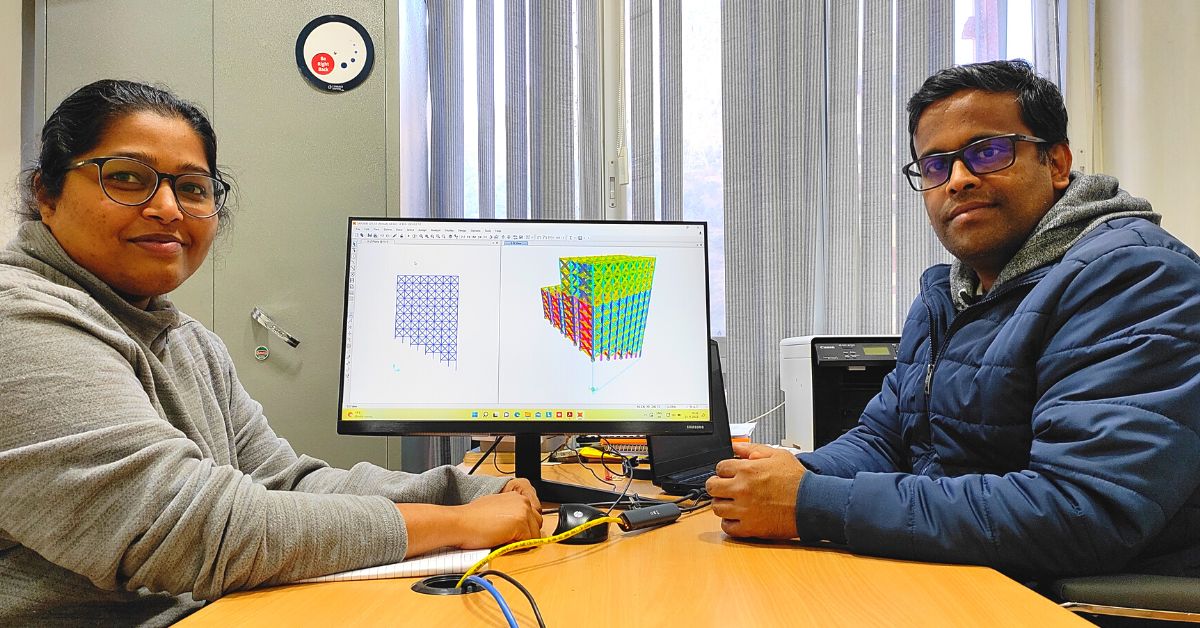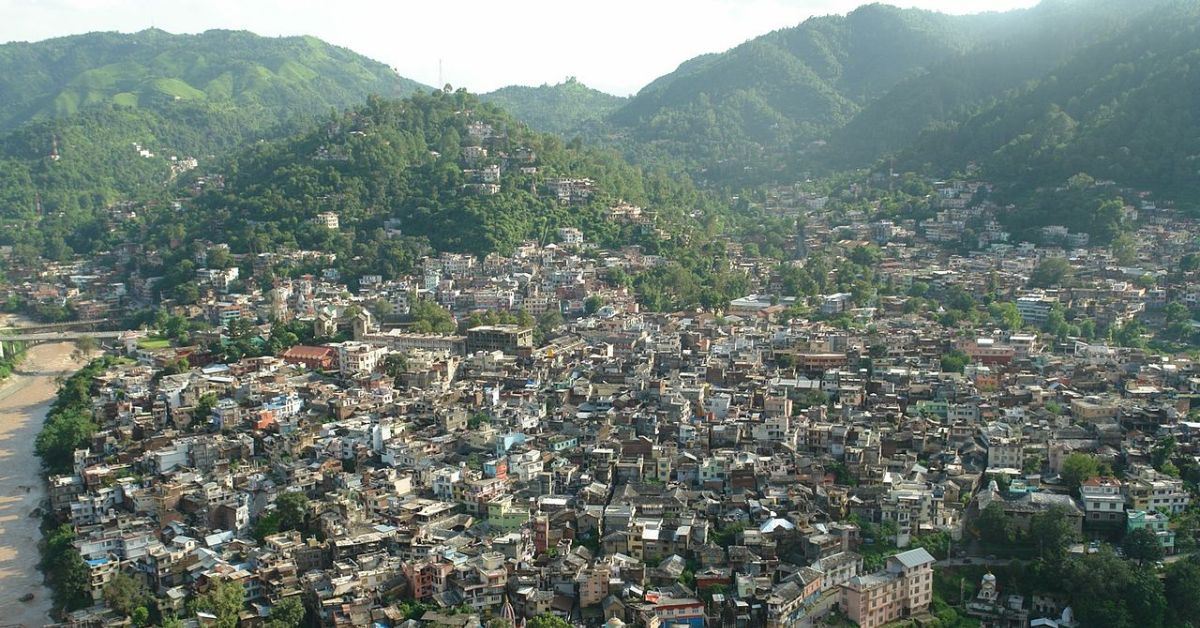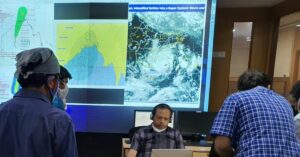How Can Himalayan Homes Better Survive Earthquakes? IIT Mandi Devises Simple Test
Researchers at IIT-Mandi have built a visual-based method to assess earthquake-prone structures in the Himalayan region. They say this method allows decision-makers to prioritise any strengthening and repair work to enhance the building’s resistance to earthquakes.

Why are the Himalayas among the most earthquake-prone regions in the world?
The simple answer is the ongoing collision between the Eurasian and Indian tectonic plates. As a result, there have been periodic earthquakes that have destroyed many lives and properties.
In 2005, for example, the Kashmir region witnessed a devastating earthquake that killed over 1,350 on the Indian side of the border, injured more than 1,00,000, and destroyed thousands of homes.
Responding to these critical circumstances, researchers at IIT-Mandi — led by Dr Sandip Kumar Saha, assistant professor at the School of Civil and Environmental Engineering — have developed a relatively simple method to assess the ability of reinforced concrete (RC) buildings in the Himalayan region to withstand earthquakes.
In a paper co-authored by his research students Yati Aggarwal and published in the Bulletin of Earthquake Engineering last month, they state that this method allows decision-makers to prioritise any strengthening and repair work that must be undertaken to enhance the building’s resistance to earthquakes.
What is this method?
The first step to ensure the earthquake safety of existing structures is to assess their current vulnerabilities and strengths. It is neither physically nor economically viable to conduct a detailed seismic vulnerability assessment of every building.
Rapid Visual Screening (RVS) of buildings is often performed to assess building vulnerabilities at a large scale. RVS uses visual information to decide if a building is safe to occupy, or requires immediate engineering work for enhancing earthquake safety.
The method developed is based on rapid visual screening (RVS) of buildings.
“This is not an entirely new technique. However, we have tried to improve the existing method by incorporating region-specific vulnerability features. In this, the building is visually screened within 15-20 minutes and different features that are expected to decrease or increase the performance of the building are noted,” explains Dr Saha.
But what are these Himalayan region-specific vulnerability features?
“While assessing the building, the assessor should look into the presence of irregular features, such as sufficient distance between two buildings, heavy overhang, setback, irregular plan shape, buildings configuration (building resting on flat land or slope), soft story, visible structural damages, framing action, site conditions, seismic zone, number of stories, type of occupancy, etc,” explains Yati Aggarwal, a PhD scholar at IIT Mandi.
“Based on these observed features, scoring of the building is done. This method does not suggest any specific repair to be performed for strengthening a building. However, it helps to segregate the buildings that require minor to significant engineering intervention which may include a minor maintenance or a major strengthening work,” notes Dr Saha.

How do existing RVS methods work?
Existing RVS methods are based on data from different countries and are not particularly applicable to the Indian Himalayan region, because of some characteristics that are unique to the buildings in this region.
For example, the Himalayan region has many non-engineered structures. There is also chaotic distribution and growth of infrastructure due to a lack of awareness among local construction workers and poor planning by stakeholders.
“Non-engineered practices are not uncommon for constructing reinforced concrete buildings in India. If we talk specifically about Himalayan region, several buildings have their foundation at multiple levels to match the ground slope,” says Dr Saha, speaking to The Better India.
He continues, “The vulnerability features used to assess these buildings are derived from the extensive field survey as well as from previous post-earthquake reconnaissance reports. The major difference, while assessing the reinforced concrete buildings for its vulnerability, lies in the norm used for counting the number of stories and the building configuration having foundation at multiple levels.”
It is therefore essential to use a region-specific RVS guideline that considers factors like local construction practices, typology, etc.
“We have devised an effective method to screen RC buildings in the Indian Himalayan region so that repair work may be prioritised according to the condition of the buildings and the risk from impending earthquakes can be minimised,” he adds.

How is this assessment conducted?
Yati illustrates with an example. “Suppose a building is situated in Shimla (Seismic zone IV) on rocky strata and it has residential occupancy. Moreover, it has a soft story, irregular plan shape, no gap between two buildings, and foundation at multiple levels. The plan area below the uppermost foundation level (UFL) is nearly 75%. Number of stories below and above the UFL is two and three, respectively,” she posits.
“Now, mark one corresponding to the features present in the building (number of stories greater than three, irregular plan shape, building configuration, soft story, framing action) and zero corresponding to the features absent (important building, sufficient gap between buildings, heavy overhang, setback, visible structural damages, unfavourable site conditions) in the building under observation in the proposed RVS form,” notes Yati.
“Using the proposed modifiers for the irregular features present in the building, the obtained score is 60.41, which is less than 63 (out of a maximum possible score of 111.21). Thus, the considered building is expected to have significant structural damage in case of a strong earthquake,” she adds.
A good score denotes that the building is expected to have either no damage or minor non-structural damage. An expected vulnerability score (EVS) greater than or equal to 77 reflects a good score for a building. EVS less than 77 and greater than or equal to 63 shows that the building is expected to have major non-structural damages and moderate structural damages. EVS less than 63 shows significant structural damage.
Through extensive field surveys, researchers have collected a large amount of data on the types of buildings present in the Mandi region of the Himalayas and the typical attributes present in these buildings that are connected to their earthquake vulnerability.
A numerical study was also carried out to establish guidelines for counting the number of stories in hilly buildings for their RVS. Further, based on the vulnerable characteristics present in buildings, an improved RVS method was proposed.
“The vulnerability features used in our proposed method for rapid visual screening of reinforced concrete buildings accounts for the majority of the construction practices followed in the Indian Himalayan region. Although the extensive survey was performed in Mandi, the building typologies, local bylaws and the type of damages faced by RC buildings, in some other cities in the Himalayas during the past earthquakes, were thoroughly studied,” claims Dr Saha.
“It was noted that the buildings made of RC have common features. Therefore, the proposed RVS method is expected to be useful in the larger Himalayan region,” he adds.
The methodology developed for screening buildings is a simple single-page RVS form that does not require much expertise to fill. It takes into account the various vulnerability attributes that are unique to the buildings in the case study region.
Calculations made using these observations produce a seismic vulnerability score for buildings, which differentiates vulnerable buildings from the more robust ones, and allows better decision-making for maintenance and repair. The computation process is designed such that it minimises the possibility of human bias or subjectivity of the assessor in scoring a building.
“The proposed method ensures minimum human bias as the assessor has to mark only one or zero against the presence or absence, respectively, of considered vulnerability features. It does not depend on the individual assessor’s perception/understanding about the effect of a typical feature on the building’s performance,” explains Yati.
“RVS studies are often performed by low-skilled persons, with minimal or no formal training. Therefore, unless an accessor has sufficient background knowledge about the behaviour of a building and its various components under earthquake shaking, that person may miscalculate the vulnerability. In the proposed method, we tried to minimise that requirement. We have presented an expression after extensive analyses combining our own experience from the field surveys and several established knowledge, about seismic behaviour of buildings and its components, presented in national and international design guidelines,” says Dr Saha.

Studying the problem
The authors have been analysing the vulnerable situation of the built environment in the Indian Himalayan region for the last five years or so.
“A major challenge we always face is the unavailability of reliable data, be it about the existing buildings or about the damages occurred during past earthquakes. Also, in India where strong earthquakes are not very frequent, convincing common people to invest in ensuring seismic safety is difficult,” says Dr Saha.
While talking about the benefits of the research, Aggarwal notes, “We have shown that the proposed method is useful for segregating reinforced concrete buildings in hilly regions according to the damage that they are expected to experience in the event of an earthquake.”
What advice would the authors offer residents living in the Himalayan region?
“We do not suggest refraining from constructing RC structures in the Himalayan region. Our intention is to motivate the residents to strictly follow earthquake resistant design guidelines while constructing their houses and ask for quality construction. For any alteration to existing buildings one must thoroughly assess the implications of such alteration on the earthquake safety. We have an abundance of guidelines for earthquake resistant design and construction practices. What is needed is to implement them rigorously at the grassroot level,” says Dr Saha.
“We must realise that earthquake-proof buildings are not practically possible to construct as the earthquake itself is unknown. Our objective should be to minimise the risk of earthquake induced damages by following earthquake resistant design-construction practices,” he adds.
Both Dr Saha and Yati argue that if the building is well designed as per the guidelines of earthquake resistant design, there is no limit on the number of stories a person can construct.
“Nevertheless, it is very important to follow the building bylaws along with design guidelines while constructing any building in a region,” says Dr Saha. Meanwhile, residents involved in the construction of their own homes or structures in the Himalayas can look out for certain features.
“Presence of structural irregularities, such as soft story, floating columns, irregular plan shape, use of brick columns intermittently instead of reinforced concrete columns, insufficient distance between buildings, heavy overhangs, etc, make buildings vulnerable to seismic hazard. If the resident is involved in the design and construction phase of the building then they must ensure proper ductile detailing of the structural members (beam, column, slab, etc.). Moreover, special attention is required while designing and constructing buildings resting on slopes,” he says.
The assessment of buildings in the Himalayan region is urgent and essential not only because of the region’s general earthquake vulnerability but also because a big earthquake is expected anytime due to the “seismic gap” of the past two centuries. It is believed that a seismic gap (the absence of a large earthquake) represents the time taken to accumulate stress, which is then released in a large earthquake. It’s time that human habitats in these areas are bolstered so that they can withstand any mild or severe earthquakes that may occur in the future. If you found our stories insightful, informative, or even just enjoyable, we invite you to consider making a voluntary payment to support the work we do at The Better India. Your contribution helps us continue producing quality content that educates, inspires, and drives positive change. Choose one of the payment options below for your contribution- By paying for the stories you value, you directly contribute to sustaining our efforts focused on making a difference in the world. Together, let’s ensure that impactful stories continue to be told and shared, enriching lives and communities alike. Thank you for your support. Here are some frequently asked questions you might find helpful to know why you are contributing?

(Edited by Divya Sethu)
(Feature image of Dr Sandip Kumar Saha and Ms Yati Aggarwal courtesy IIT-Mandi. Other images courtesy Down to Earth, Wikimedia Commons.)
Additional Sources:
Aggarwal, Y., and Saha S. K. (2022). An Improved Rapid Visual Screening Method for Seismic Vulnerability Assessment of Reinforced Concrete Buildings in Indian Himalayan Region, Bulletin of Earthquake Engineering, 1-29.
This story made me
-
97
-
121
-
89
-
167















